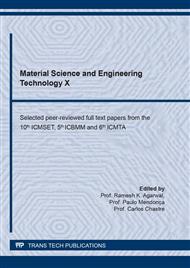p.338
p.345
p.352
p.358
p.367
p.377
p.383
p.389
p.397
Impact of Basic Parameters on Heat and Moisture Process Simulation of Bamboo Building Envelope in China (II): Material Parameters
Abstract:
Bamboo building envelope (BBE) is a kind of hygroscopic construction, making it necessary to describe the coupled heat and moisture (H&M) process accurately. In order to clarify the impact of material parameters on the H&M process of BBE, the study sets up BBE comparison model groups in WUFI Plus for annual coupled H&M process simulation, with exterior walls of 3 typical bamboos as boundary conditions and climate data of 24 Chinese representative cities as external conditions. Results quantitatively show the factor impact of hygrothermal properties parameters on the annual moisture content, heat and moisture exchange of the bamboo exterior walls, as well as the HVAC demand and indoor hygrothermal environment of the bamboo enclosed space. The simulation without liquid water-related parameters results in significant underestimation of moisture content and moisture exchange, and causes evident deviation to the heat exchange and HVAC demand. The constant valuation of thermal parameters and hygric parameters lead to deviation in heat process and moisture process of the BBE, respectively. The study highlights the moisture content-dependent bamboo hygrothermal parameters for the application of BBE.
Info:
Periodical:
Pages:
367-376
Citation:
Online since:
February 2022
Authors:
Price:
Сopyright:
© 2022 Trans Tech Publications Ltd. All Rights Reserved
Share:
Citation:


